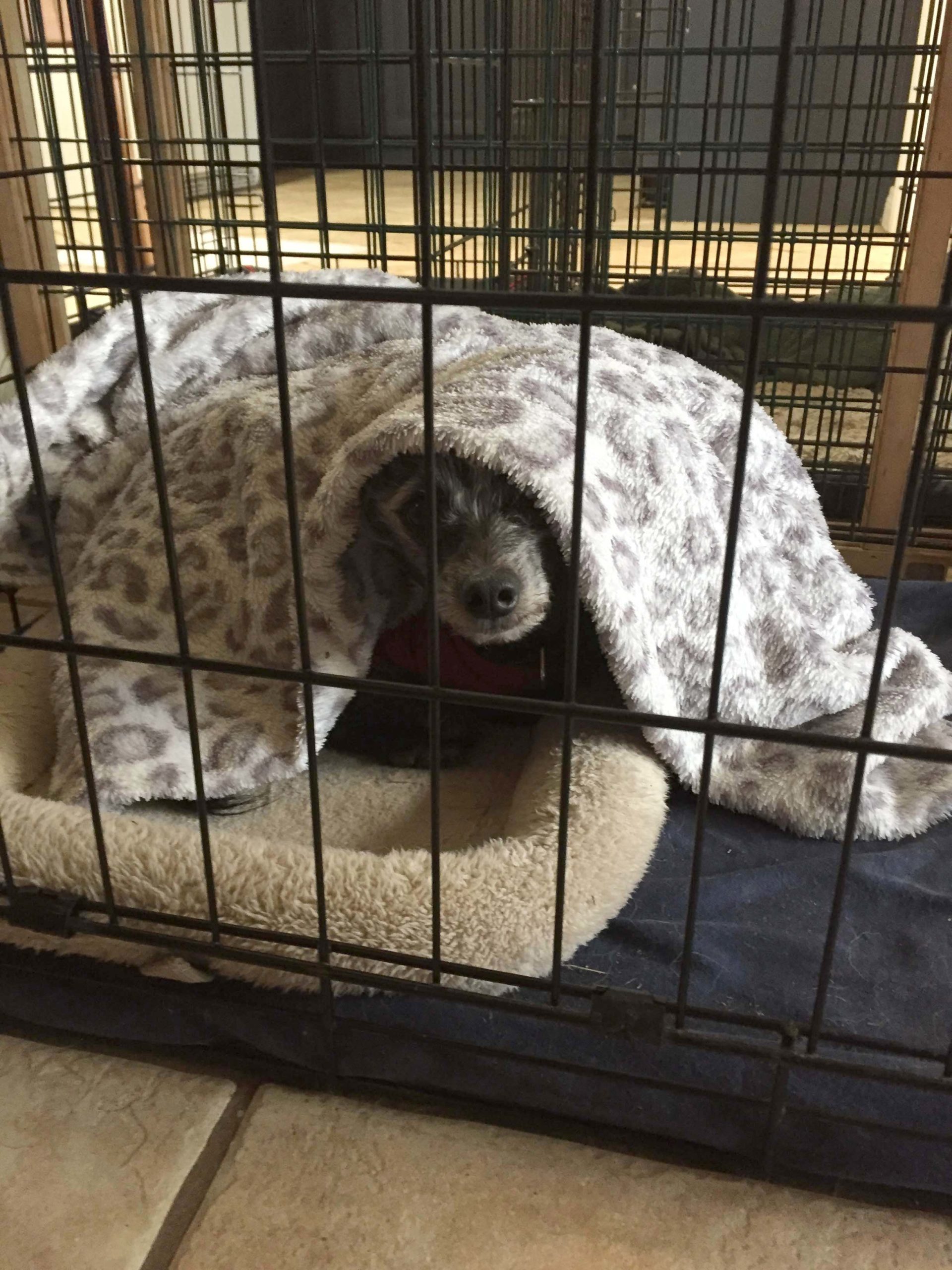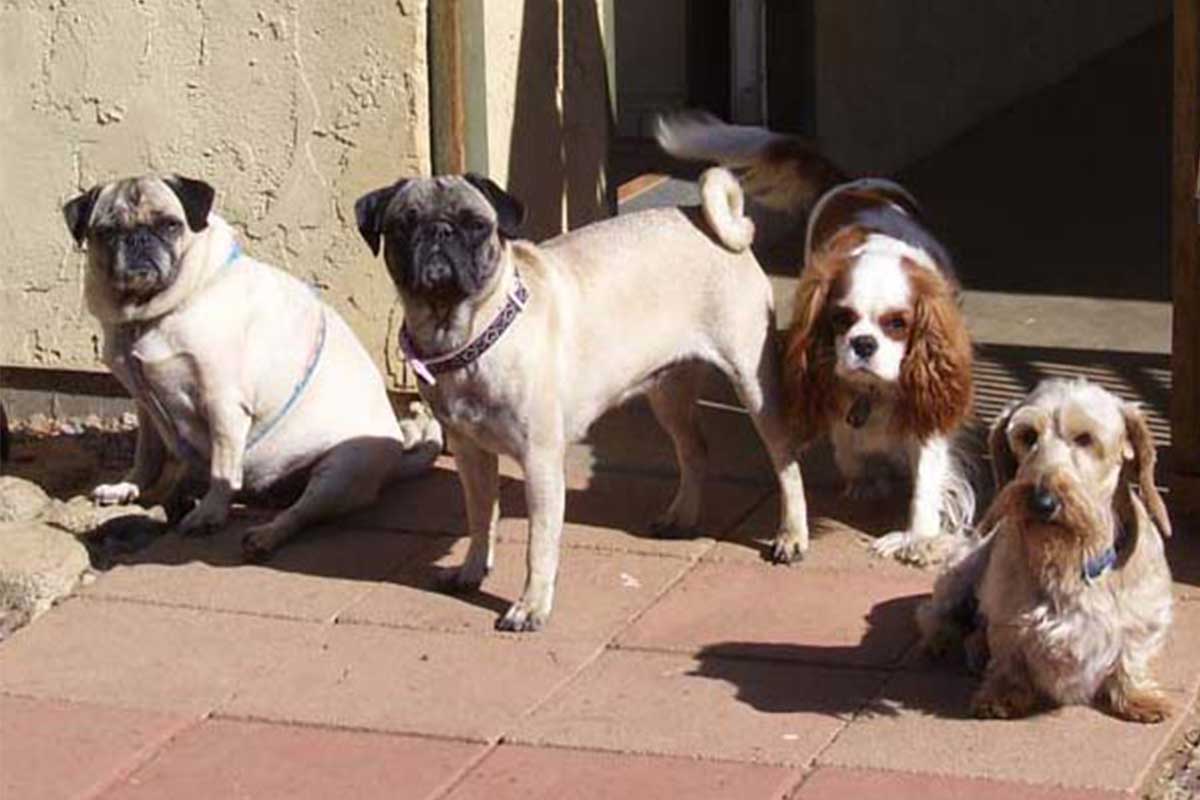You love your new family member, but you notice that she seems hand-shy or that she cowers whenever she encounters something that didn’t faze your previous dog. It’s common to assume that dogs like this must have been abused in their previous home, but that’s not necessarily the case. It is more likely that she was raised with little to no socialization. She may not have had much handling early in life or might have lived most of her life inside a kennel, especially if she came from a puppy mill or hoarding situation.
This lack of socialization leads to tremendous fear. Your challenge is to help her feel safe in her new life.
Manage The Environment
She might feel safest in a small space. An entire room or a fenced yard might offer too much freedom. Everyday objects such as dishwashers, televisions or vacuum cleaners may terrify her. A dog who has spent her life in a cage has never seen a sliding glass door and might crash into it while trying to escape.
Make use of crates, exercise pens and baby gates, especially when there is a lot of activity or you can’t supervise her. If she’s used to a wire cage she will feel safe in a similar place such as a crate. That will allow her to get used to new sights, sounds, and people from a position of security. Be sure your children leave her alone while she’s in there–no poking, dragging her out, or banging on the top.
She might be more comfortable around dogs than people. If you have other dogs in the family, she’ll learn from them what is scary and what is safe. With their presence for support, she’ll be more confident on walks, potty breaks, and even just hanging out.

Beginning The Socialization Process
Give her time to get comfortable. She‘ll be watching your every move to try to make sense of her surroundings. Use your tone of voice and body language to communicate. Speak in a happy, upbeat voice. If you sound worried or overly comforting, she’ll wonder what there is to be concerned about. Squat down to her eye level rather than standing over her or bending at the waist, especially if she is small. Picture how you’d feel if King Kong were in your kitchen!
Don’t force her to accept petting or handling. Spend quiet time sitting on the floor nearby and toss a tasty treat in her direction occasionally. Sit sideways or with your back to her so it doesn’t seem as if you are coming after her. Eventually she will approach and investigate, but don’t be surprised if she takes off when you make the slightest move. Praise and give her a treat when you see she relaxes, even if she’s still far away from you.
She might not be ready to be touched. Try stroking her softly with a wand. Remove it and toss her a treat when she accepts this step. Gradually shorten the length of the wand until your hand is close to her. Your ultimate goal is to be able to touch her without the wand. Reward even the slightest progress.
When you are able to pet her, stroke her chest instead of the top of her head. A hand coming from above is threatening and could cause her to bite.
The first time you put a leash on her she might panic and flip over or pull back. Let her get used to dragging it around for a few minutes, then hold the leash and let her get used to feeling pressure. Don’t pull on it or drag her. Release the leash and toss her a treat when she gives in even slightly to the pressure.
Once she’s used to the leash, tie her to your belt and keep her with you as you go about household activities. You might want to let her drag a leash when she’s not actually attached to you, so you can grab it quickly if she tries to dash out a door or leap off the porch. She’ll learn gradually that these daily rituals aren’t going to hurt her and that you and your household are now her safe place.
If your dog is not making steady progress in a few days or weeks, or if you reach a plateau you are having difficulty moving past, your veterinarian should be contacted. A referral to a veterinary behaviorist may be warranted to help your dog live life Fear Free.
This article was reviewed/edited by board-certified veterinary behaviorist Dr. Kenneth Martin and/or veterinary technician specialist in behavior Debbie Martin, LVT








